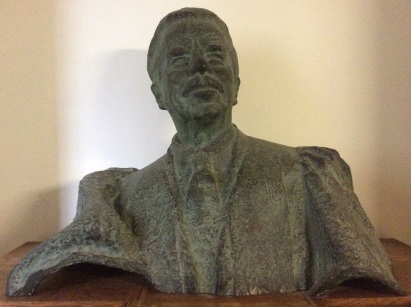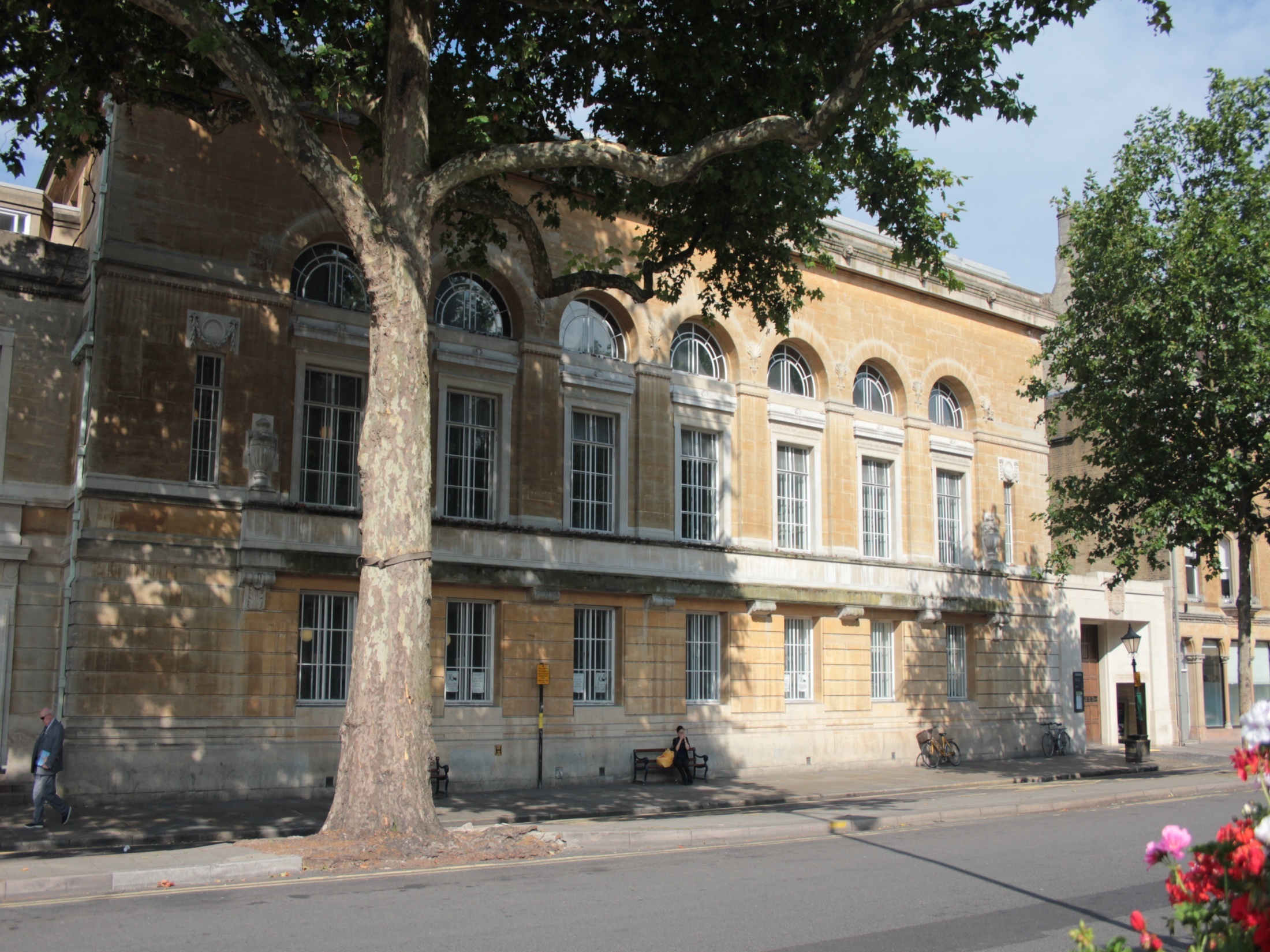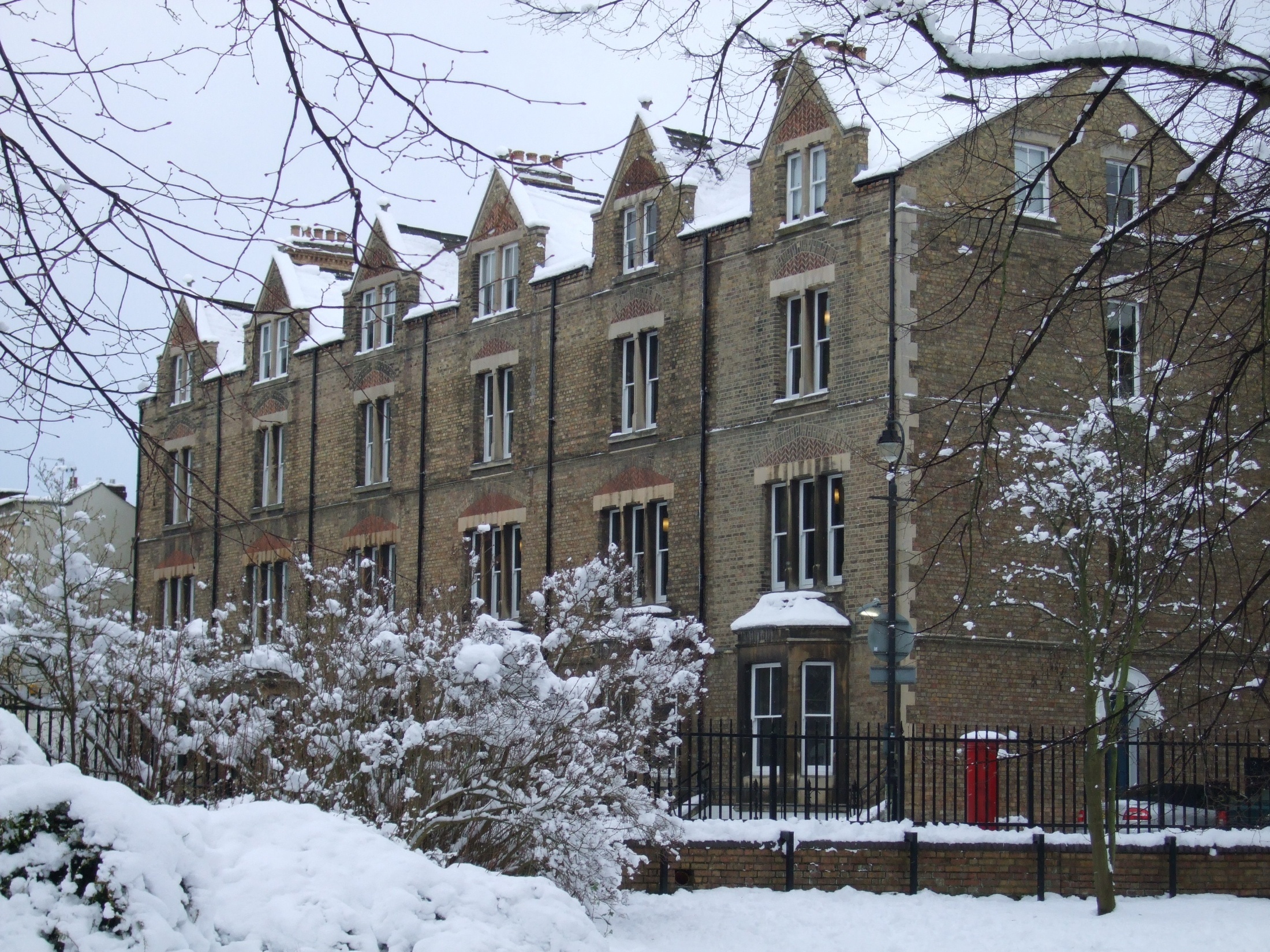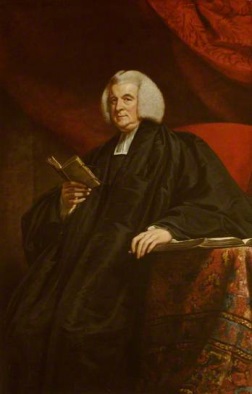The Taylor Institution is the centre for the study of medieval and modern European languages, except English, and was Oxford’s first specialist centre to combine library, teaching and administration in one building.
 Above: The Taylor Institution, University of Oxford (Architect C.R. Cockerell, 1841-45)
Above: The Taylor Institution, University of Oxford (Architect C.R. Cockerell, 1841-45)
It owes its name and its existence to the highly successful London architect Sir Robert Taylor (1714-1788), sometime Surveyor to the Bank of England, Architect of the King’s Works and Sheriff of London.

Left: William Miller(?) Sir Robert Taylor (ca. 1782/1783)
In a codicil to his will Sir Robert left the residue of his large fortune (£180,000), in the first instance to his son and, in the event of his dying without issue, to the Chancellor and Scholars of the University of Oxford for buying freehold land and ‘erecting a proper edifice thereon, and for establishing a foundation for the teaching and improving the European languages’. After various legal complications and the death of Sir Robert’s son, Michael Angelo, in 1834, the University inherited the sum of £65,000. It was then decided to combine this project with the plan to build a University art gallery, now the Ashmolean Museum. An architectural competition to design two buildings entirely distinct in their internal arrangements but to form ‘parts of an architectural design which is required to be of a Grecian character’ was announced in 1839. The winning design by C. R. Cockerell resulted in a handsome neoclassical building, completed in 1844.
The nature and constitution of the Taylorian were not decided without some controversy. The dominance of classical studies and the influence of High Church religion resulted in an environment hostile to the introduction of this new area of teaching. Regulations for the Institution were approved in part in April 1845, a board of nine curators from within the senior ranks of the University being then appointed. It was a further two years before full agreement was reached and the Taylorian statute finally passed on 4 March 1847. The aim was to teach those languages ‘essential to Diplomatic or commercial pursuits’ and possessing a ‘sufficient’ literature. French and German were first priority, followed later by Italian, Spanish, Slavonic languages, Byzantine and modern Greek and Portuguese and, briefly in the late 19th century, Scandinavian languages. In the first decades teaching was at an elementary level and it was not until 1903 that an Honour School of Modern Languages was at last established.
The purpose of the library has always been to provide a working collection to support the study of European languages rather than to be a rare books collection, although inevitably early publications were acquired by the library, often as gifts.
 Above: Taylor Institution Library: Rare Book Room volumes
Above: Taylor Institution Library: Rare Book Room volumes
In the 19th century the collecting policy was eclectic. Although philology and European belles-lettres were the main areas covered, other subjects such as history, theology and even jurisprudence are indicated in the locator lists. The focus of collecting in the 20th and 21st centuries has been increasingly restricted to the core subject matter, i.e. all the languages and literatures of continental Europe (plus the Celtic languages), especially those studied at Oxford.
During the early period of the library’s existence books for purchase were suggested by the teachers and decided on by the Library Committee of the Curators at their weekly meetings. The first librarian, John Macray (1796-1878), was appointed on 23 March 1847, the first books bought in May 1848, but from the Curators’ minutes it seems that the library did not open until early in 1849. Books were not on open shelves except to senior members of the University, and until 1856 no borrowing was allowed. The early years saw only a slow growth of the book stock since the Institution’s income was largely taken up with repayments of the building costs.
Two collections antedated the library and were moved there in the first year, namely the architectural books of the founder and the large collection of books and works of art bequeathed to the University by Robert Finch.
Left: James Northcote, Robert Poole Finch (1791)
The library also provided a temporary home for two other unrelated collections (the Hope Entomological from 1849 and the Strickland Ornithological from 1854) until they were moved to the newly built University Museum in 1860.
The library’s first published catalogue, in 1861, listed some 6,000 book titles, two thirds of which represented works in the Finch collection. From 1858 to the end of the 19th century about £250 per annum was spent on acquisitions with a further £80-£100 for bindings. From time to time special supplementary grants would be made.

In 1874, at the suggestion of Friedrich Max Müller (1823-1900), the Taylorian’s second Professor of Modern European Languages and for many years a most active Curator and supporter of the library, the sum of £500 was provided for filling gaps in the collection particularly in the early period of literature. Consequently most of the library’s incunables and Reformation pamphlets were acquired in the 1870s and 1880s.
Left: George Sauter, Friedrich Max Müller (date unknown)
The last quarter of the 19th century was a period of particular activity and growth. On the retirement of the first Librarian in 1871 the Curators resolved to elect ‘a competent Librarian and not simply a Library Clerk’. Accordingly, Dr Heinrich Krebs (1844-1921), was appointed on 12 May 1871 and was to remain in post for the next 50 years. In the early 1870s the collections, then numbering c. 13,000 items, were entirely reorganised and recatalogued by an assistant librarian from the Bodleian Library, George Parker. In 1895 the library was augmented by more than 1,000 vols mainly of early Spanish and Portuguese works bequeathed by Miss Williamina Mary Martin (1819-1895). By the end of the century some 350 titles were being acquired annually and the library subscribed to 114 periodicals and newspapers. The collection was said to number 40,000 vols in 1900.

In the 20th century the library was greatly enhanced by bequests from teaching staff associated with the Institution such as Professor Hermann Georg Fiedler, (1862-1945) and by Oxford colleges depositing specialist collections, Oriel College being the first to do so in 1921.
Left: Hermann Georg Fiedler
Major events in the library’s history must include the opening of a substantial extension to the building in 1932, which facilitated wholesale reclassification of the modern stock in the 1960s and 1970s and provision of open shelf access for graduates.

Above: Taylor Institution: 1930s extension
From 1964, following the Parry report on Latin American studies, the library began to build up substantial Latin American collections.
In 1968, because of pressure on space, the Slavonic and Modern Greek collections were removed from the main building, and separately housed and organised at 67 St Giles’. In the late 1970s, these collections transferred to new quarters, at 41-47 Wellington Square, as did the Institution’s administrative and academic staff.
 Above: Taylor Institution Library, Wellington Square, housing Slavonic and Modern Greek collections
Above: Taylor Institution Library, Wellington Square, housing Slavonic and Modern Greek collections

Left: Taylor Institution Library, Voltaire Room
1975 saw two far-reaching changes in the library, namely the opening of the Voltaire Room, established to promote study on the Enlightenment, and the creation of the University’s first out-of-town book repository in Nuneham Courtenay (now superseded by the Book Storage Facility (BSF) in Swindon, which opened in October 2010 and is capable of holding 8.4 million volumes on 153 miles of shelving).
In 1985 the library’s Germanic holdings took a new direction when the nearly 3,000 vols of Whitechapel Public Library’s Yiddish collection, containing many uncommon books from the first half of the 20th century, were acquired. In the present day the Taylorian continues to benefit from bequests such as the recent donation from the estate of distinguished medieval scholar Dr Olive Sayce, which contains rare books from the 16th to 19th centuries.
Jill Hughes, former German Subject Librarian and Librarian-in-Charge, Taylor Institution Library
Further reading
The above text has been adapted from a detailed description of the Library’s history and historic collections, published by Jill Hughes in the Handbuch der historischen Buchbestände in Deutschland. Hrsg. von Bernhard Fabian. Hildesheim: Olms Neue Medien, 2003.
Photo credits
BBC-Your Paintings (Public Catalogue Foundation)
James Legg, Taylor Librarian, and others, Taylor Institution Library


Pingback: Treasures of the Taylorian – History of the Book
Pingback: Introduction to Special Collections at the Taylorian – History of the Book